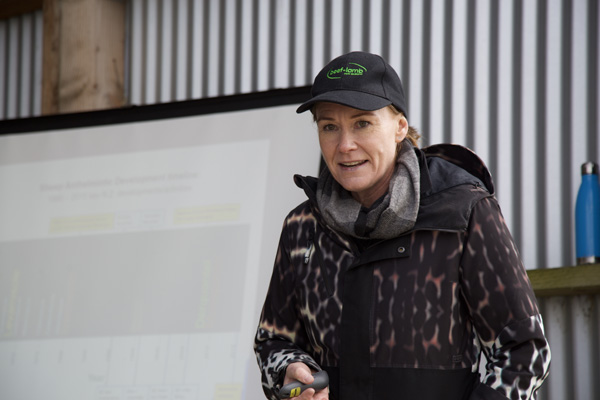What to do with tail end ewes?
In light of a rapid rise in levels of drench resistance, Ginny Dodunski of Wormwise investigates alternatives to help light breeding ewes.

For many years, the standard advice on dealing with light breeding ewes has been: “Draft them, drench them, and put them on some better grass.”
In light of a rapid rise in levels of drench resistance on New Zealand farms, it’s becoming increasingly important to avoid unnecessary drench inputs.
When ewes are under pressure for feed, have another underlying disease or are not coping with being part of a large mob, they’ll sometimes come under pressure from parasites. The parasites might not be the primary problem but removing them can help some of those ewes.
So can separating them and feeding them better – without the extra drench input.
Here’s a good example from a client who collects a lot of data from his flock, Central North Island: Of 200 tail end ewes drafted off and put onto the cattle finishing area (undrenched) for a month, 50 did not respond and were subsequently drenched. Around half of these picked up after the drench. (25/200 had a drench-responsive worm burden).
My own experience says that tail end ewe groups do tend to have a higher Faecal Egg Count (FEC) than their better conditioned flock mates. However, I know AgResearch have done some data analysis on this and found that not to be the case (Dave M. Leathwick, Siva Ganesh & Chris M. Miller (2020) Nematode parasites are not a major cause of ill thrift in adult ewes in New Zealand, New Zealand Journal of Agricultural Research, 63:2).
In Kate Flay’s PhD work looking at ewe wastage in several large North Island flocks, she found that parasites accounted for less than 15% of the primary causes of ill thrift in 500 post-mortems (500 post-mortems!!!!) that she performed.
If we keep drenching ewes when they drop off the pace:
1. We are using unnecessary drench on those ewes that are thin for some reason other than parasites (and this is generally a high percentage of the light ewes).
2. We are retaining genetics in our flocks that rely on drench to maintain productivity. In the words of FE Gold breeder Kate Broadbent – “Don’t forgive them and drench them – if they don’t pick up with a bit of extra feed, put a tag in their ear and mate them to a terminal, or cull them.”
Wormwise is a partnership between Beef + Lamb New Zealand, the Ministry for Primary Industries, Agcarm, the New Zealand Veterinary Association and other stakeholders.
Listen to the podcast:
A recent national report shows a third of sheep farmers have triple drench resistance – what does that mean for you?
Wherever you are on the drench spectrum, taking control and making management changes by knowing your parasites can reap financial rewards.




